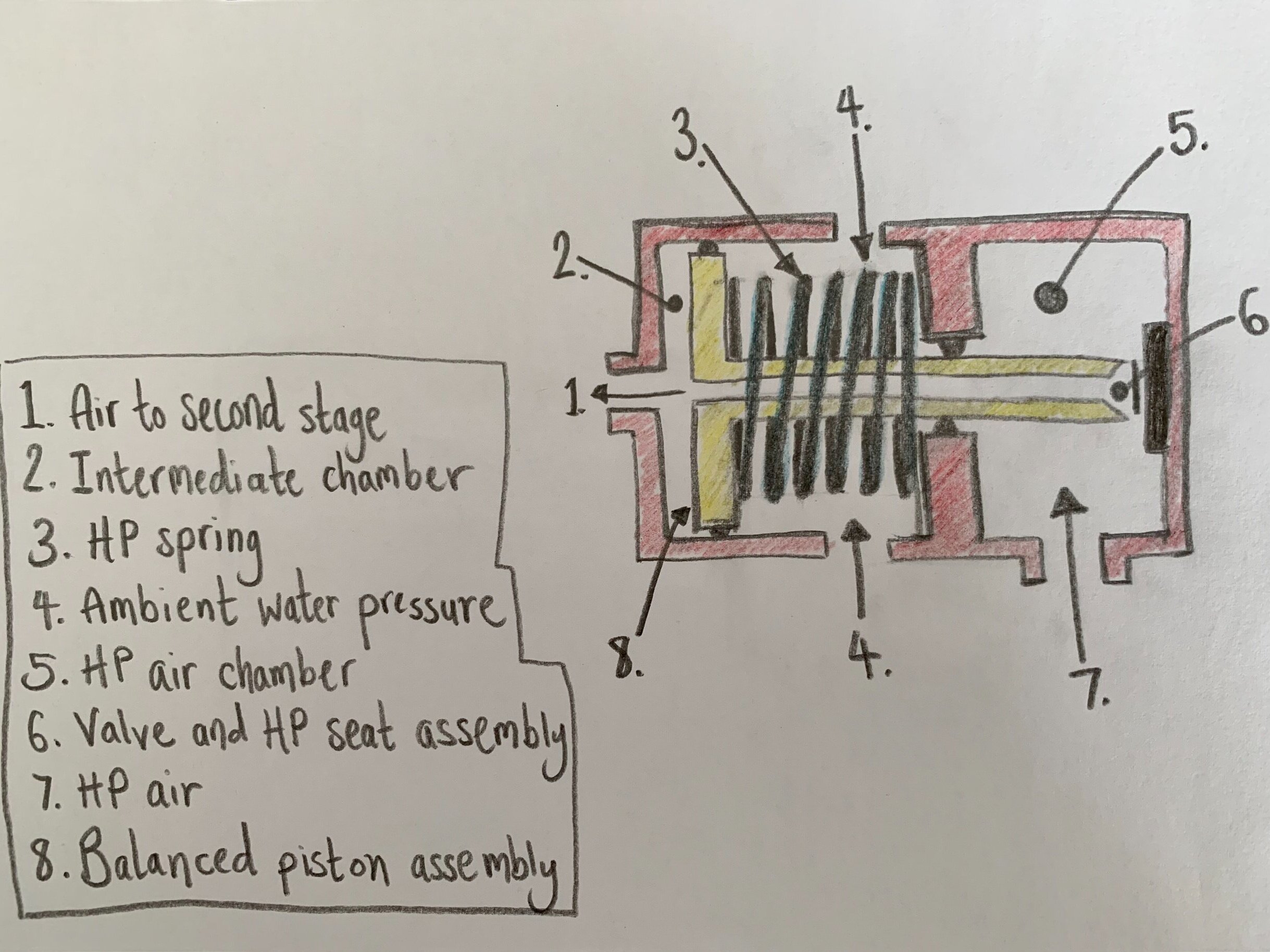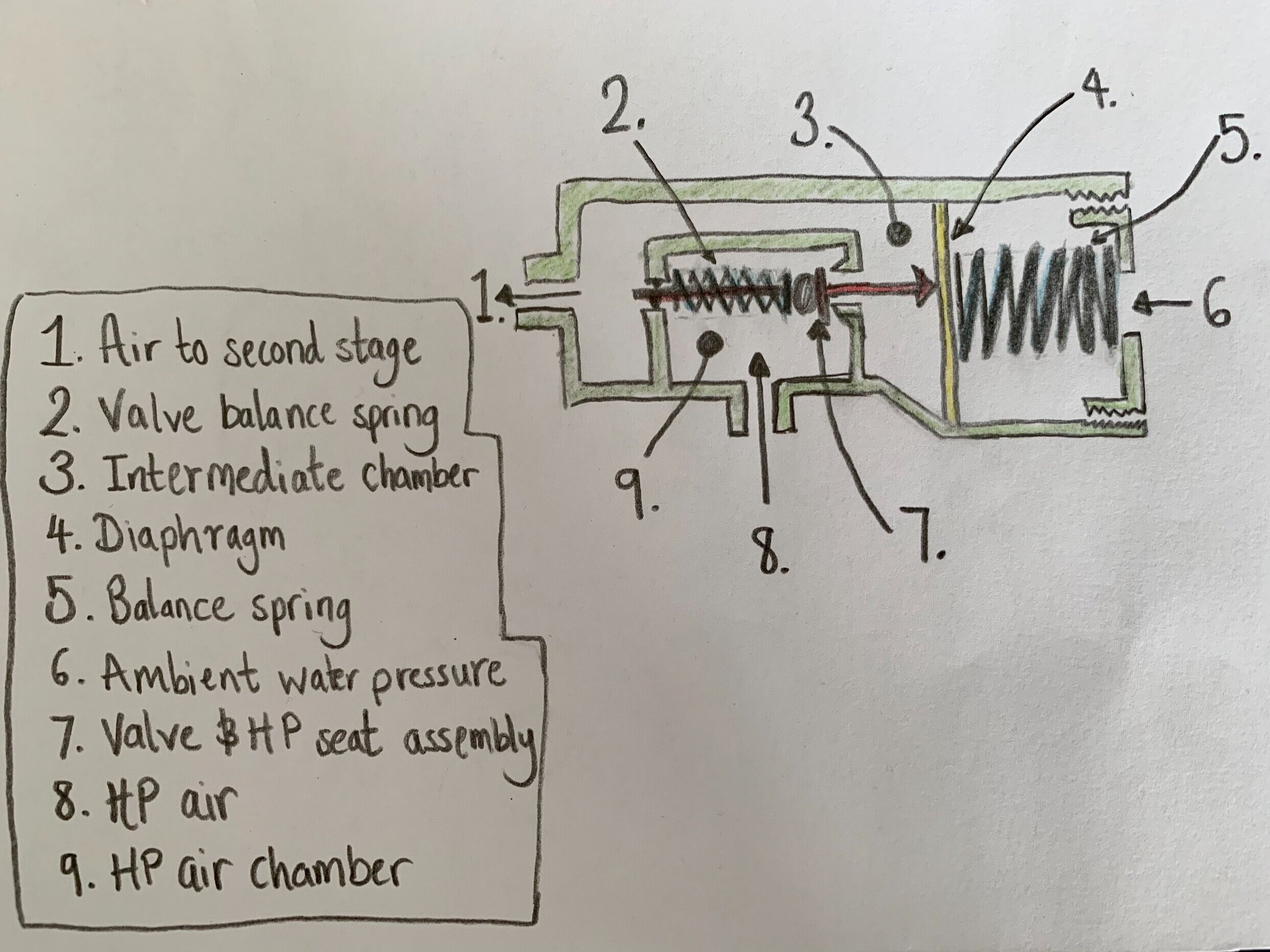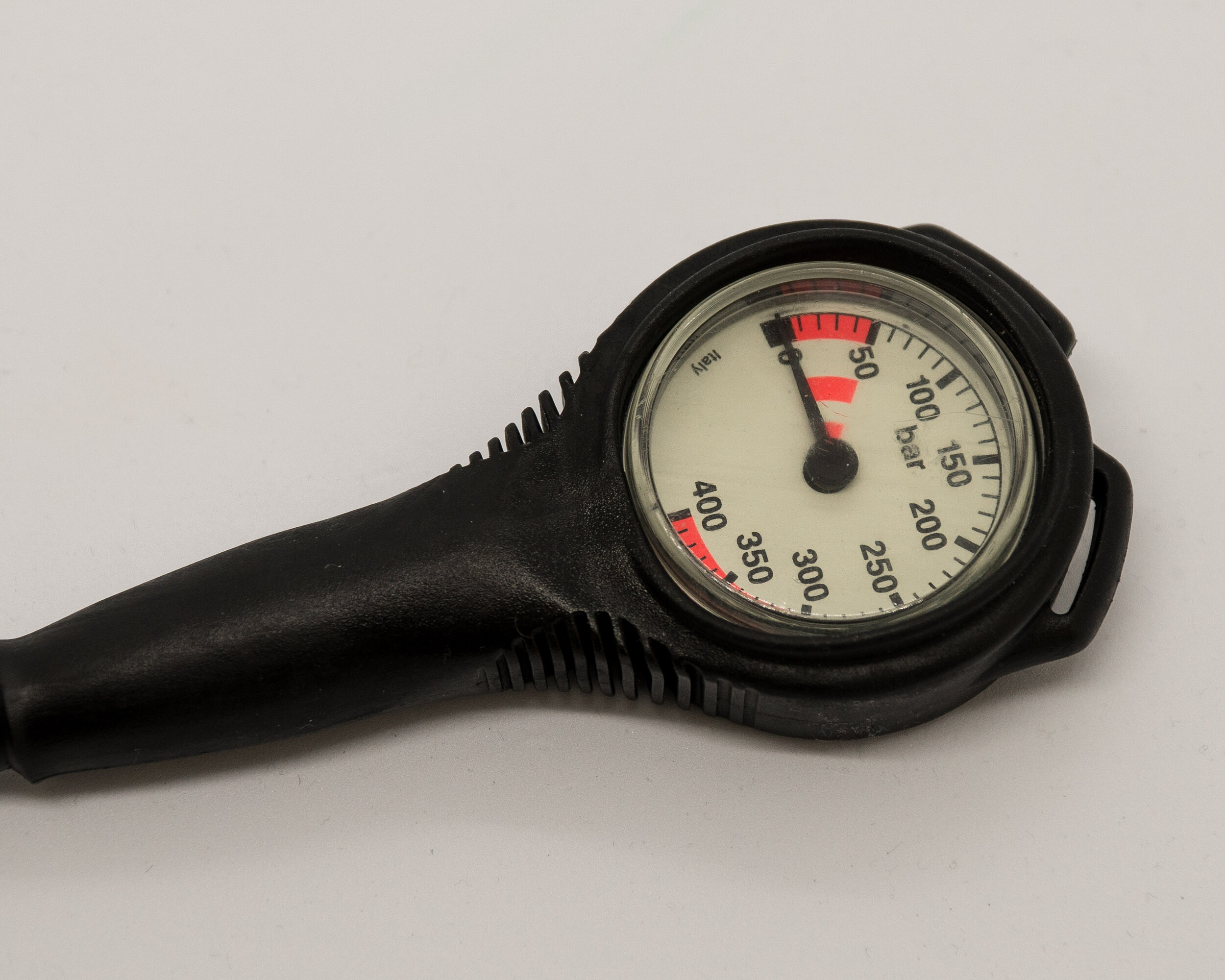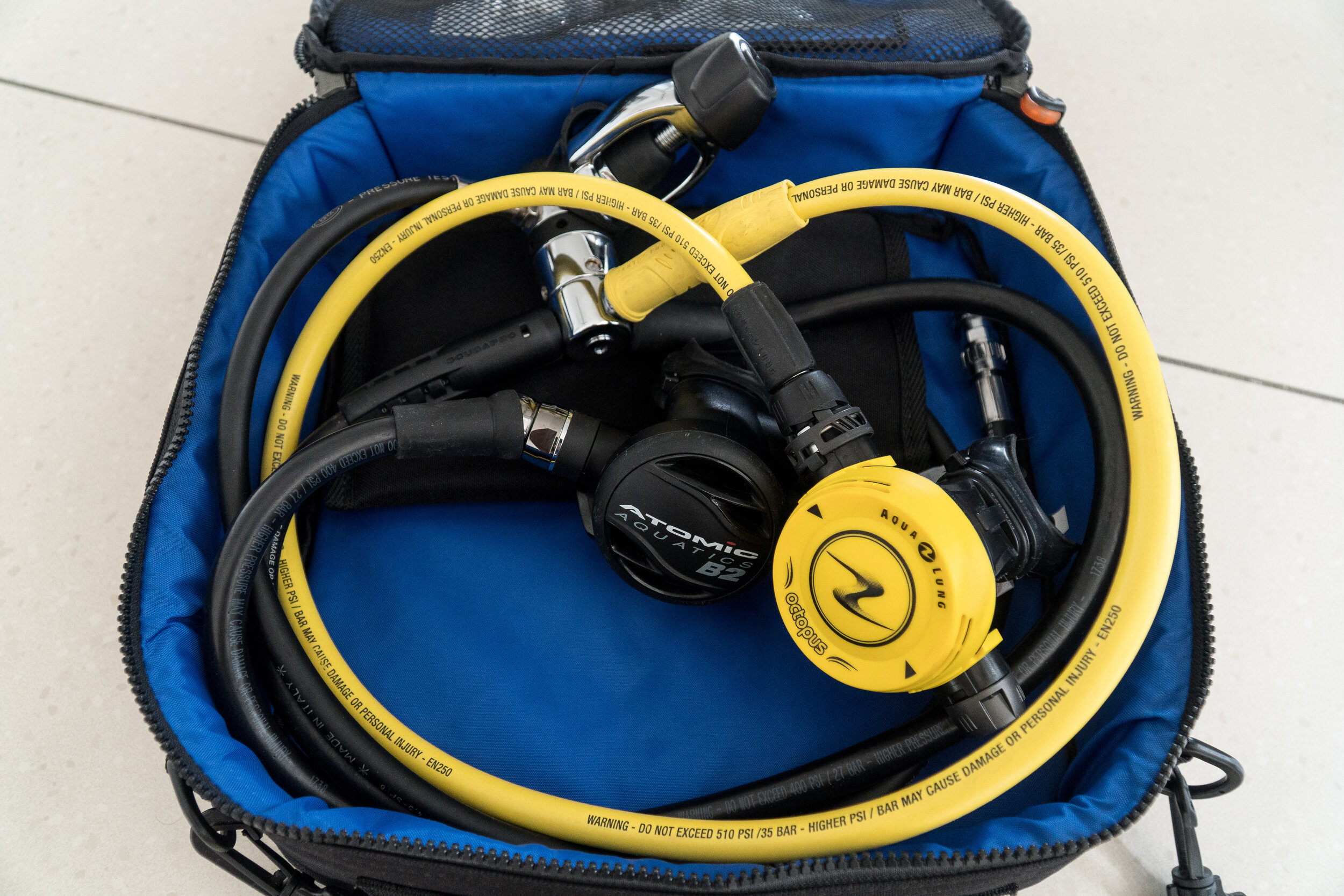Dive Essentials - Regulators
When you think of scuba gear, your mask, fins, or wetsuit might come to mind first. But there’s one piece of equipment that’s absolutely critical to your safety underwater — the scuba regulator. It’s the unsung hero that delivers life-giving air from your tank to your lungs, and without it, your dive is over before it begins.
In this ultimate guide, we’ll explore every detail of a scuba regulator: how it works, its main components, how to choose the right one for your diving style, and how to care for it so it lasts for years. Whether you’re a beginner about to buy your first set of gear or an experienced diver looking to upgrade, this guide will help you make the right choice.
Atomic Aquatics B2 second stage and Aqualung Octopus second stages.
The term regulator is often used as a cover all that includes several pieces of kit, namely the first stage regulator, second stage, octopus, pressure/depth gauge (SPG = submersible pressure gauge) and hoses. It is worth spending time to understand which terms refer to which item as it can be confusing and a little embarrassing when some refers to a first stage and you pick up your second stage! But even more importantly, having some knowledge about the function of each part of your set up and how they work helps you to appreciate your equipment even more and how to look after it as well. Regulators are complicated pieces of equipment with multiple moving parts and do not come cheap, however, if looked after well there is no reason they won’t last a long time and provide you with years of life to enjoy the underwater world.
There are normally five parts to any regulator set up, first stage, second stage, octopus, pressure/depth gauge and low pressure inflator. Each has a different function and its worth taking some time here to explain what each does and how it works.
Atomic Aquatics B2 first stage
First stage - this refers to the fitting that attaches directly to your tank and is the most critical part of your whole set up. This reduces the air pressure from the pressure inside of the cylinder to an intermediate pressure in your hose.
There are two main types of first stage available, piston and diaphragm type regulators - neither one is better than the other but each has their own advantages and environments they are suited to. You’ll also need to consider whether to purchase a balanced or unbalanced version, especially if going for the piston type. The piston or diaphragm is the mechanism by which the tank pressure is controlled and reduced to a breathable pressure.
Piston vs Diaphragm Regulator:
Balanced Piston First Stage
Piston regulators are generally simpler than its diaphragm counterpart due to having less moving parts which makes them more reliable, easier to maintain, but come at a higher price due to the precise nature of the machining and manufacturing process. The other advantage that a piston first stage offers is a higher air flow than the diaphragm version.
Balanced Diaphragm First Stage
Diaphragm first stages are generally preferred by those who dive in cold water as the diaphragm acts as an environmental seal meaning that it is less likely to freeze up or be affected by dirty or silty water.
Essentially, either design will work for the majority of situations you’re likely to encounter as a diver and a lot of it comes down to personal preference.
Balanced vs Unbalanced
Unbalanced Piston First Stage
There has been a lot written about the benefits of balanced vs unbalanced regulators and even so called “over balanced” regulators. Essentially, the term unbalanced only refers to piston type regulators these days as it is near impossible to find an unbalanced diaphragm version. Balanced regulators effectively compensate for higher ambient pressure at depth or decreasing tank pressure by equalising the pressure on both sides if the valve making the effort required to breath constant rather than feeling like you’re fighting to draw breath. Again, the benefit comes at a higher initial purchase price than the unbalanced version. The following diagrams will help to explain the differences.
Unbalanced Diaphragm First Stage
Second stage - this is what you put into your mouth to breath and is probably the most recognisable piece of equipment that is referred to as a regulator. It is essentially a demand valve the operators when you inhale and reduces the air pressure further from the intermediate pressure in the hose to atmospheric/ambient pressure.
Octopus - this is your spare second stage that can be either used if your primary second stage fails or, more often if your buddy runs out of air and needs to breath from your tank. Often an identical model to that of your primary it is noticeable as they are normally coloured yellow so easily located in an emergency.
Pressure Gauge or SPG
Pressure/Depth Gauge/SPG - although technically as critical as your first and second stages it is important as you need to know how much air you have left in your tank and when to start making your wy back up to the surface. Often these come as part of a console and include a depth gauge as well, however with advances in technology quite often these functions are used as backups due to the availability of dive computers that provide constant depth monitoring and also that can pair with a pressure transmitter that is installed to a HP port on your regulator.
Investing in a protective bag is worth while to keep your set up dry and safe when not in use
There are a number of other considerations to take into account as well such as size and weight - the weightier the regulator set, the more baggage allowance you are going to use up which can be critical if you travel a lot. The number of high pressure ports on the first stage is all another item to consider, if you want to add a tank pressure transmitter and still keep your SPG as a backup then you’ll need an extra port to accommodate it. Some second stages now come with a swivel joint which makes for a more comfortable feeling when diving as it doesn’t feel like the reg is going to be twisted out of your mouth which can happen. You can also get some innovative inflator set up which also double as a spare mouth piece if you want to become more streamlined in the water, but doesn’t have the same reach as the longer, yellow octopus hose. Ultimately it all comes down to personal comfort/preference and how much you are willing to pay like most things in life - however the regulators on sale these days from the major manufacturers are all highly reliable and safe. Hopefully you have found this article useful and we look forwards to hearing about your diving adventures.
Credit: Regulator diagrams by Laura Haynes







